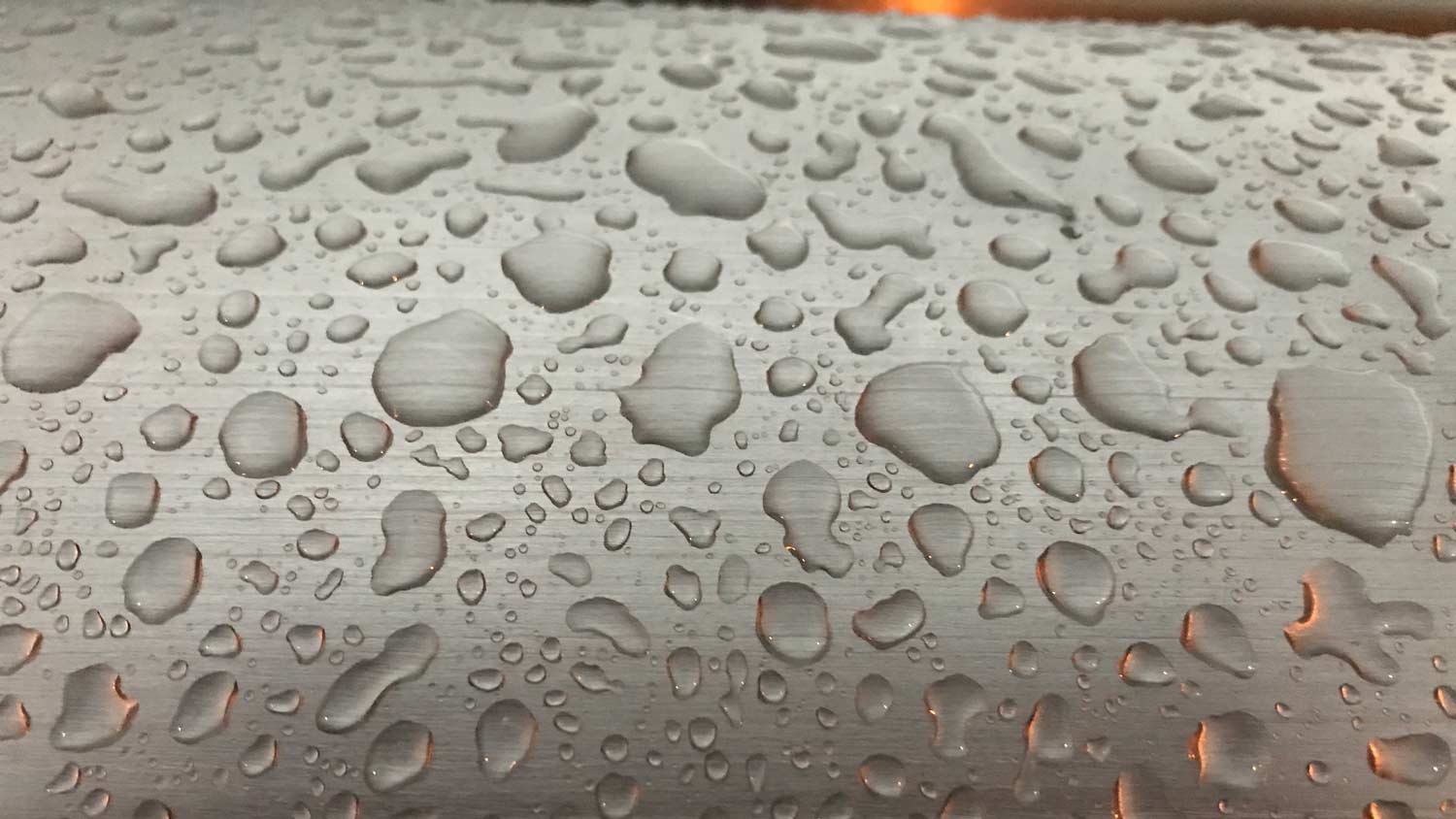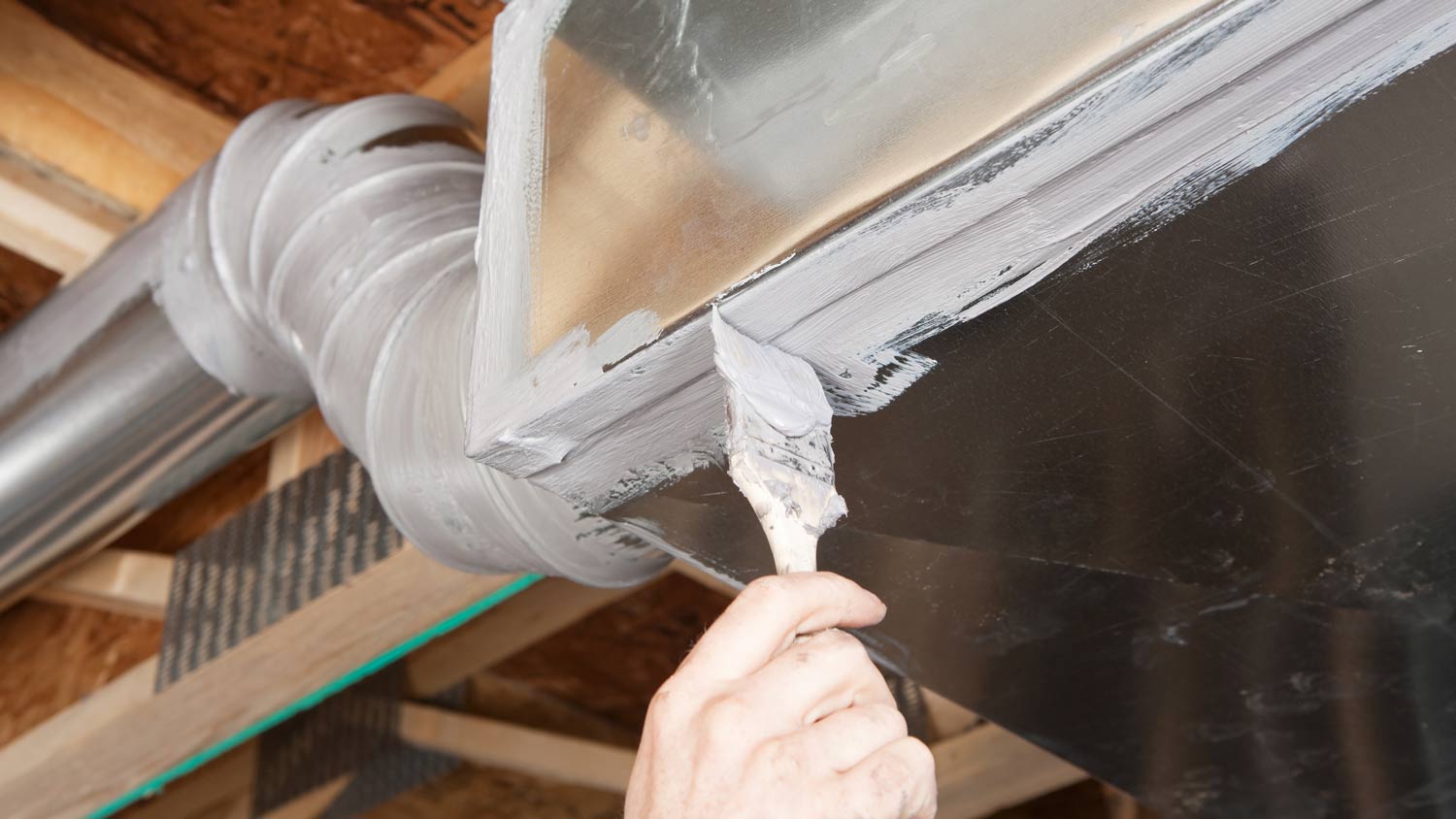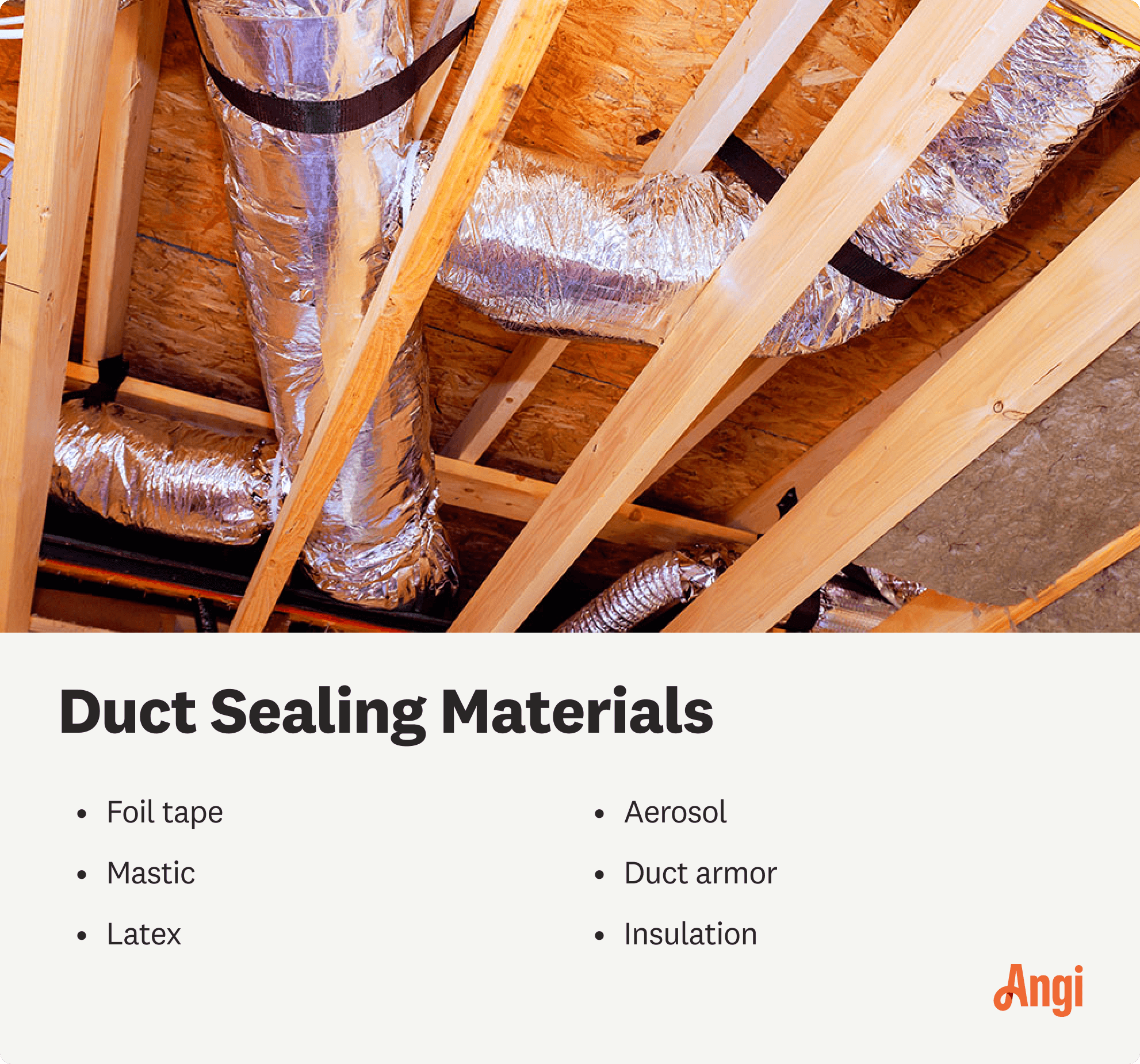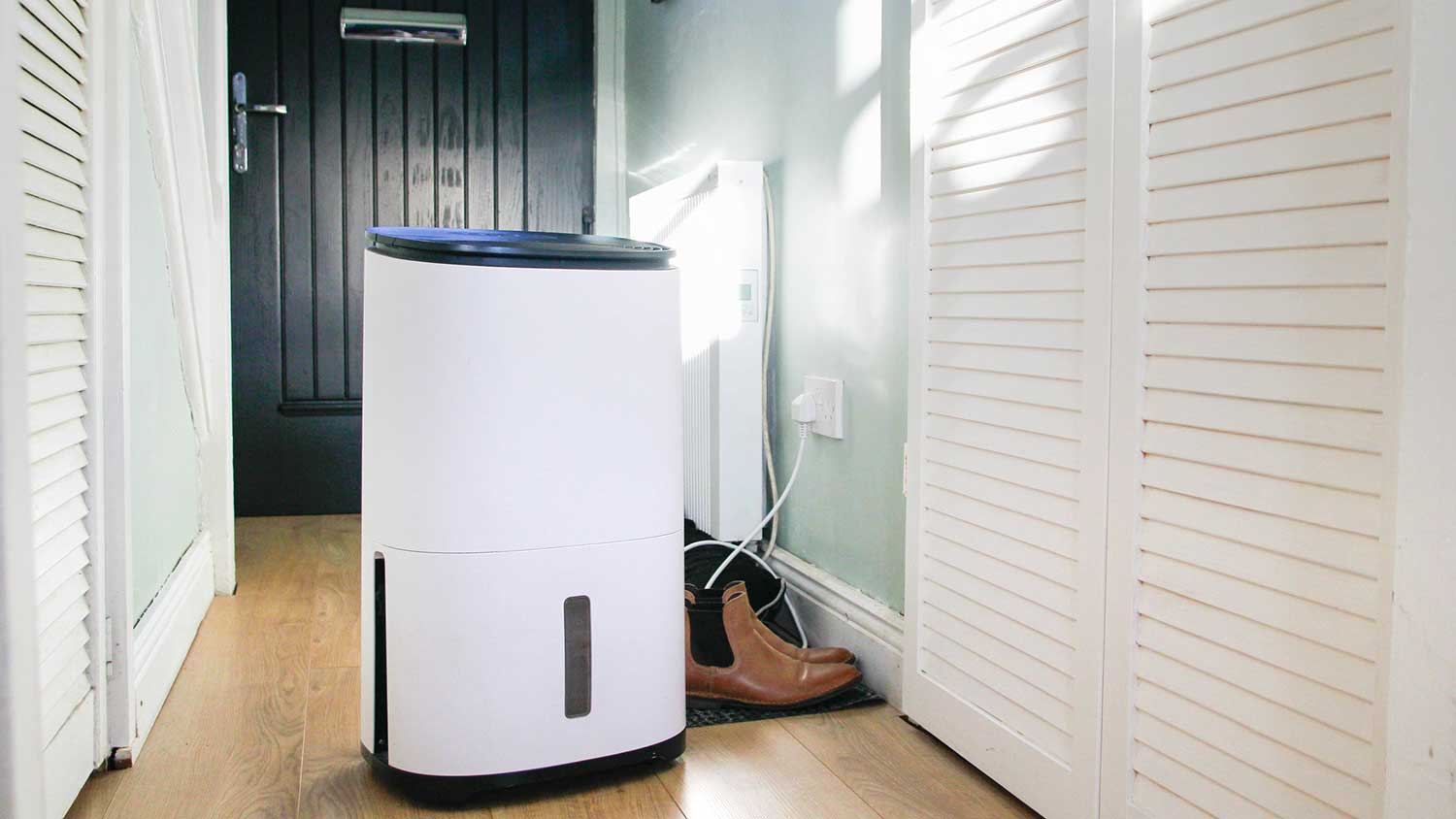What Causes Condensation on Ductwork in Crawl Spaces?
This is no time to sweat


Lack of insulation, high humidity, and temperature shifts can all cause condensation on your crawl space ducts.
Too much condensation can reduce the efficiency of your HVAC system, lead to mold growth, and even affect the structure of your home.
Regular maintenance and a few tweaks can keep the sweat away.
You hear a drip, drip, drip and it sounds like it's coming from under the house. You take a peek, and you see it: condensation on the ductwork in your crawl space. But don’t fret—there are a few things that make your ducts sweat and some things you can do about it. Here are the most common reasons for condensation on ductwork in crawl spaces.
1. It's Too Hot Outside

You're grateful for your air conditioning, which keeps your home at a cool and comfortable 72 degrees on days when the mercury climbs to 90 or higher outdoors. But that much of a temperature difference can be what's making condensation form on the ducts.
Think back to your middle or elementary school science classes. You learned that when you fill a glass with cool water and let it sit at room temperature, condensation forms on the exterior of the glass. The same thing is happening in your ducts, except instead of cool water, cool air is flowing through them.
When that cool air meets the higher temperature inside your crawl space, condensation forms.
Over time, too much moisture on the outside walls of the ducts will encourage mold growth and may even damage the ductwork itself. You can't control the outside temperature and likely don't want to air condition your crawl space. Your best bet is to add insulation to the ductwork to keep the cooler air from coming into contact with the heat.
Contact an installer who does ductwork to find out more about your options for adding insulation. Depending on the age and condition of your ducts, they may recommend replacing everything with insulated flex ducts.
The cost to add ductwork insulation ranges between $1,000 and $2,700. While this may seem high, it’s still less than having to replace your entire HVAC system or repair damage to the structure of your home caused by excessive moisture.
2. It's Too Humid
If you live in a humid area, the odds are, your crawl space is humid too, especially in the middle of a hot summer. All that water in the air has to go somewhere, and more often than not, it forms condensation on the exterior of your ductwork.
To keep your ducts from sweating, you need to lower the humidity in the crawl space area. There are two ways to do so. Option one is a temporary fix and involves setting up a dehumidifier in your crawl space. The dehumidifier will pull moisture from the air and collect it in a reservoir. Depending on the model, you may have to empty the reservoir any time it fills up.
Option two is to encapsulate your crawl space so that moist air is less likely to get in. Oftentimes, encapsulating a crawl space involves using a dehumidifier and installing a vapor barrier along the ground, so that moisture can't get in. If the crawl space was vented originally, those vents will be sealed during the encapsulation process.
3. The Ducts Are Leaking

Small openings in your ductwork or gaps along the seams can allow warm air from the crawl space to seep in, interacting with the cool air flowing through the ducts and causing condensation. If you suspect leaky ducts are the problem, talk to a local professional duct installer about your options.
Your best choice may be to replace damaged flexible ducts that are leaking water. For sheet metal ducts leaking at the seams, having a pro seal the seams may be all you need. The total cost of duct sealing depends on the project size but usually ranges from $0.50 to $1.50 per square foot.
How to Prevent Condensation on Ductwork in Crawl Spaces

The best way to deal with condensation on ductwork is to prevent it from forming in the first place. These preventive measures can keep condensation at bay in your crawl space.
Insulate the ducts: HVAC ducts will sweat if there’s a marked temperature difference between the crawl space air and the air inside the ductwork. Insulating them can prevent humid air from touching the cool ducts and forming condensation.
Seal cracks: Cracks, gaps, and holes in the ductwork allow air to leak out. It can create condensation when that air comes into contact with the crawl space air. HVAC duct leaks also decrease the system’s efficiency and increase energy bills.
Encapsulate the crawl space: This process seals the foundation vents and prevents humid outside air from entering the crawl space, stopping the formation of condensation on the ducts.
Keep up with maintenance: Annual HVAC maintenance ensures your system functions correctly. A technician will inspect your HVAC unit and ductwork and perform any necessary repairs to keep everything in tip-top shape.
How Much Does Duct Sealing Cost?
Air duct sealing costs between $500 and $4,000, with homeowners paying an average of $2,250. The exact price depends on the size of the home, the sealing method, the layout and condition of the ducts, and the extent of the leak. After sealing your ducts, you should have a pressure test performed to check that there are no leaks. This will add $200 to $450 to the total cost but can help ensure your ductwork isn’t wasting energy.
DIY vs. Hiring a Pro
You can seal air ducts yourself if you’re handy and have the right tools, supplies, and experience. Labor makes up around 90% of the project's total cost, which means doing the work yourself can be much more budget-friendly.
However, while minor leaks are manageable for a DIYer to patch with duct mastic or foil tape, sealing major ductwork leaks is best left to a professional. Hiring a duct installer near you will ensure your ductwork is properly sealed, so you won’t have to worry about condensation in your crawl space anymore.
Frequently Asked Questions
In most cases, a crawl space won’t dry out on its own. Over time, a damp crawl space can cause serious problems, like mold growth, sagging floors, increased indoor humidity levels, and even pest infestations. The best way to remove moisture from a crawl space is to encapsulate and insulate the space to keep out humidity and keep the area dry.
A sump pump can remove excess moisture from under a house if standing water is present. Other ways to protect your crawl space from moisture include installing a vapor barrier, using a dehumidifier, installing insulation, and using a fan to dry the space. Finally, keeping your gutters clear of debris and positioning your downspouts away from the home’s foundation can prevent moisture from getting into the crawl space in the first place.
Yes, if your crawl space is prone to humidity, a dehumidifier can help keep it dry. For use in a crawl space, you’ll need a high-capacity and high-efficiency dehumidifier with built-in air filtration. It’s also wise to purchase one with a self-draining feature. Otherwise, you’ll need to climb into the crawl space to empty the dehumidifier.





- Furnace Repair
- Air Conditioning Repair
- HVAC Repairs
- Furnace Installation
- Wood & Pellet Stove Repair
- Dehumidifier & Humidifier Repair
- Heat Pump Companies
- Swamp Cooler Repair
- Wood Stove Services
- HVAC Companies
- Commercial A/C Repair
- Geothermal Installation
- Air Conditioning Installation
- Boiler Repair
- 24 Hour Furnace Repair
- Geothermal Repair
- Heat Pump Repair
- Humidifier Installation
- Thermostat Repair
- Thermostat Installation
- Nest Installation
- Heating & Cooling
- Heating Repair
- Furnace Cleaning
- Furnace Tune-Up
- HVAC Technicians
- Subcontractors
- Furnace Maintenance
- Plumbing & Heating Companies
- Wood Stove Inspection
- Mini Split Installation
- Wall Heater Repair
- Duct Installers
- Condensation on Ductwork: Causes and Potential Solutions
- How to Stop Condensation on Air Vents to Prevent Mold and Mildew Growth
- What Are Air Ducts? Understanding Your Home’s Ductwork
- What Is the Best Ductwork for Crawl Spaces?
- How Long Does Air Duct Cleaning Take? 4 Factors That Impact the Time Frame
- How Often Do I Need to Clean Air Ducts in My HVAC System?
- When Is Insulation Required on Air Ducts? What You Need to Know
- How to Check for Blocked Air Ducts: 7 Methods
- 11 Common Signs of Dirty Air Ducts and What to Do Next
- 7 Crawl Space Maintenance Tips for a Safe and Dry Home










